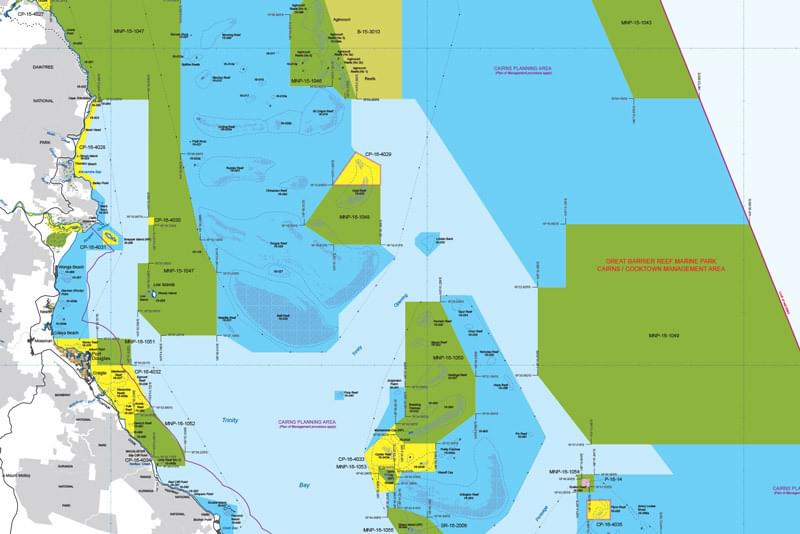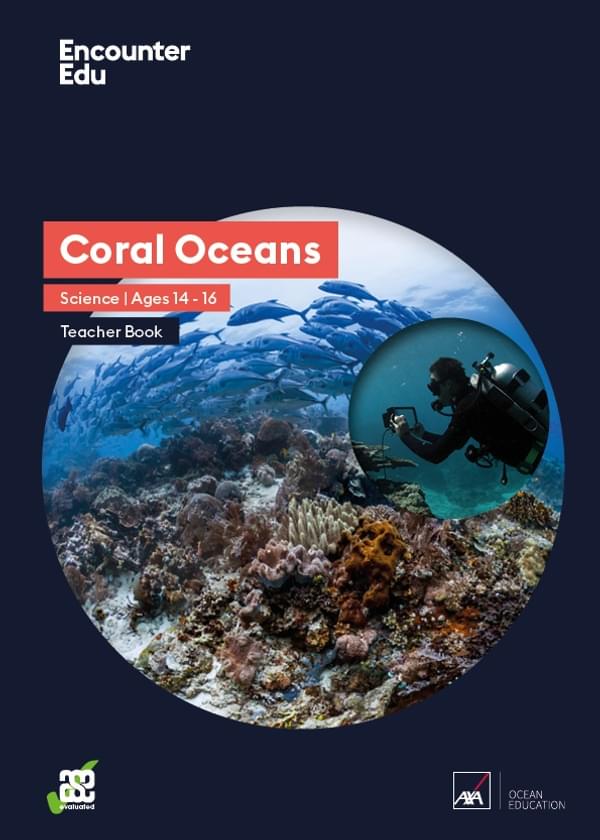Learn more: How is the Great Barrier Reef being protected?
The Great Barrier Reef is contained within the Great Barrier Reef Marine Park, established in 1975 by the Australian government. It covers 344,400 km2 in area and includes some 3,000 coral reefs, 600 continental islands, 300 coral bays, and about 150 inshore mangrove islands.
Zoning
The Great Barrier Reef Marine Park Authority (GBRMPA) has established a zoning plan. This plan provides maps of the entire marine park area and sets out the activities that are allowed to take place in each area. Examples of the maps can be downloaded from the GBRMPA website.
 GBRMPA
GBRMPA
The example above shows the different zones off Port Douglas including around the Agincourt and St Crispin Reefs, which were surveyed by the XL Catlin Seaview Survey in 2012. The dark blue area denotes a Habitat Protection Zone, light blue for General Use, green for Marine National Park Zone, and brown for Buffer Zone.
There are varying levels of protection for these different zones on the reef, from a ban on all activities save for boating, diving, and photography in the Marine National Park Zone, to varying levels of permissions for fishing in other zones. For instance trawling is allowable in the General Use Zone but not the Habitat Protection Zone.
Engaging with communities
Alongside the wider management plan, GBRMPA engages with communities who can have a positive impact on the future of the reef. As part of their Reef Guardians programme, GBRMPA works with fishers, farmers, council, and schools, and also operates GBRMPA Onboard, a scheme to engage tourism operators in caring for the reef.
Is GBRMPA doing enough?
Some NGOs and community groups feel that GBRMPA needs to be doing more to help preserve the Great Barrier Reef. For instance, the Australian government announced further plans for the expansion of commercial ports, coal terminals, and shipping in late 2013.
Several NGOs are running campaigns to put pressure on GBRMPA and the Australian government to limit the amount of industrial development in the Great Barrier Reef Marine Park. An example is Fight for the Reef supported by the Australian Marine Conservation Society and WWF-Australia.
Moreover, the Great Barrier Reef could be placed on an international list of World Heritage Sites in Danger as early as 2014. The United Nations Educational, Scientific, and Cultural Organization (UNESCO) maintains a list of World Heritage sites, those unique and irreplaceable places of cultural or natural value to humanity. And the World Heritage Committee of UNESCO has warned that without the urgent implementation of sustainable management improvements, the reef could land on their 'in danger’ list.
A collective effort
Conservation on the Great Barrier Reef is a collective effort, involving regulatory bodies such as GBRMPA, individual farmers and fishers, teachers and pupils in schools, local communities and concerned individuals, scientists and researchers, tourism operators, and international bodies such as UNESCO. We can all play a role in conserving the reef.

Science | Ages 14-16
Coral Oceans
This Coral Oceans GCSE Science unit of work challenges students to think about the impact they have on coral reefs as they study their importance, the consequences of threats and how to protect them. The cumulative approach to this unit means students will develop skills throughout to complete a decision-making exercise in the last lesson.